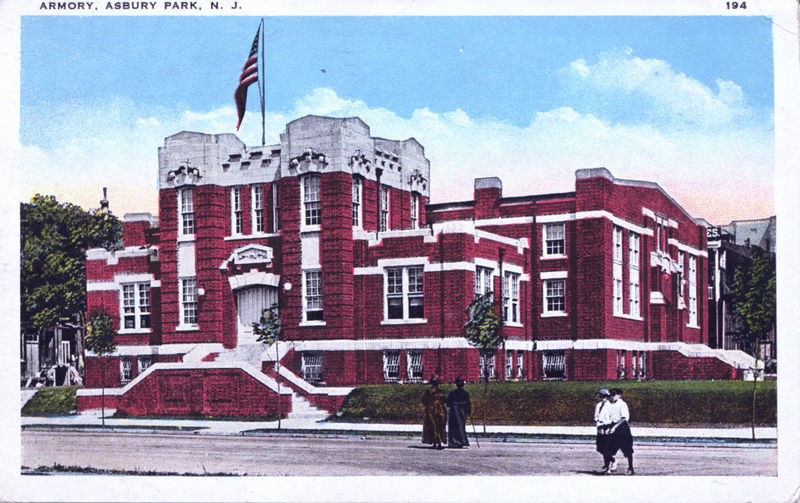
The Asbury Park Amory at Lake Avenue and Bond Street is one of Asbury Park’s most historic buildings. Built between 1914 and 1915 its initial purpose was to house Company H of the National Guard. In addition to its military significance, the Asbury Park has always played an important role in the city’s sports and music history. Shortly after its opening, the state passed a bill allowing armories to be used for community events. Early on, the building was used for basketball games and weekly dances. It was also used by local rifle clubs for its range practice. In the 1940’s and 1950’s the Armory was used for wrestling and boxing matches. For many years, the Armory also housed VFW Post 1333.
But music-wise, in the mid-1940’s, the Armory gained importance as a music venue for black entertainers playing for black audiences. With Asbury Park being segregated, there were limited options on the West Side where dances could be held for black youth. The Armory was only a block from the West Side and was accessible to all. It had a large wooden drill practice floor that was perfect for dancing and an overhanging balcony for spectators. The Armory was large enough to accommodate the crowds needed to pay major black acts. There was no stage there at that time, but bands would set up on the dance floor against one wall and people would dance around them.
The late 1940’s was a transition period in American music. Large dance bands were dissolving into smaller jazz combos and a new form of music, rhythm & blues, was becoming popular among African American youth.
For almost ten years, the Armory hosted frequent dances for black youth with some of the biggest entertainers the field had to offer. Just a few of the many jazz and pop acts that played the Armory were:
- Cootie Williams Band
- Jimmie Lunceford Orchestra – 1844 in attendance
- Billy Eckstine and his Orchestra
- Joe Liggins & his Honeydrippers
- Andy Kirk & his Clouds of Joy
- Buddy Johnson & his Orchestra with Ella Johnson & Arthur Prysock
- Erskine Hawkins & his Orchestra
- Eddie Heywood
- Dizzy Gillespie
- Stan Getz
- Louis Jordan & his Band
- Wynonie Harris
- Savannah Churchill
- Sonny Til & Orioles
- Freddie Mitchell & Band
- The Ravens
- The Vocaleers
- Bobby Thomas & Vibranaires
- Mahalia Jackson & Sky Light Gospel Singers
- Four Buddies

Photo by Joseph A. Carter Sr. (c) Madonna Carter Jackson
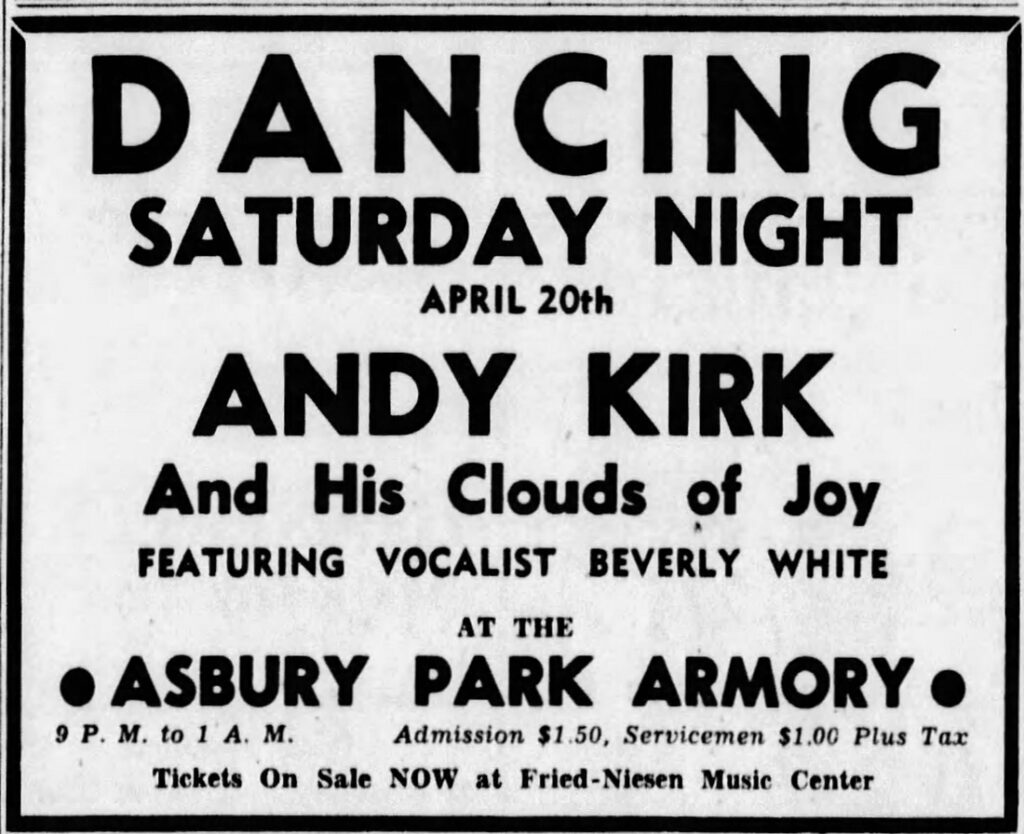
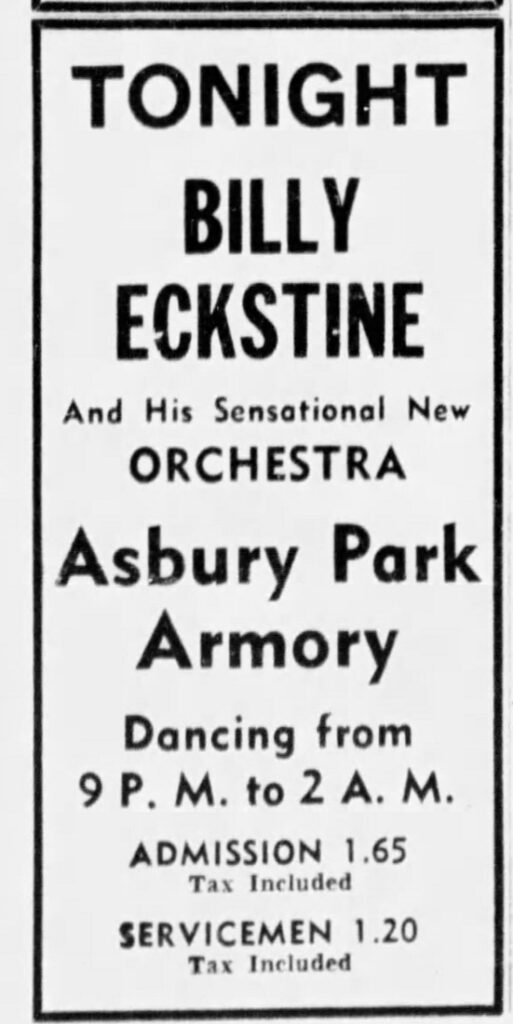

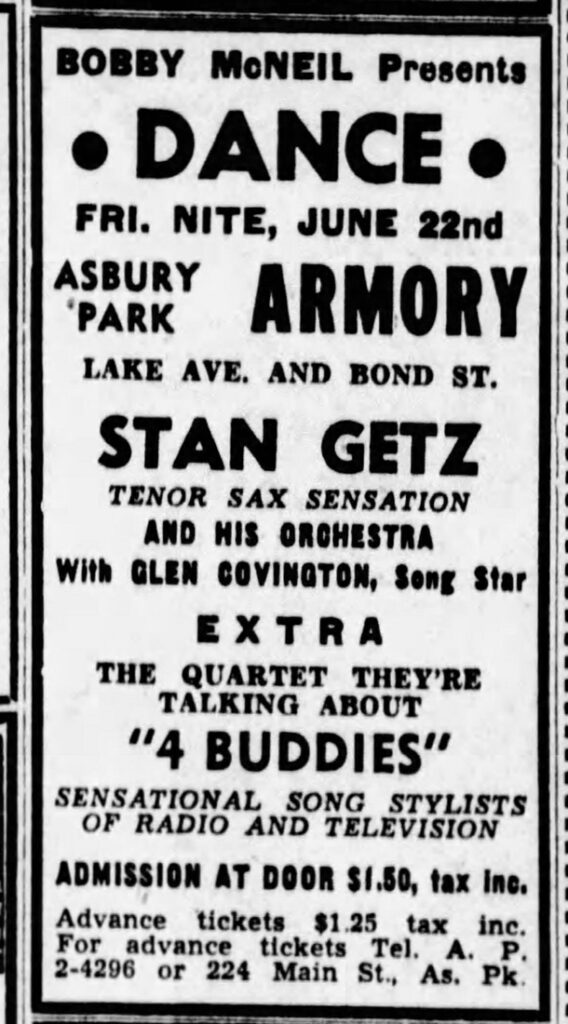

Photo by Joseph A. Carter Sr., (c) Madonna Carter Jackson
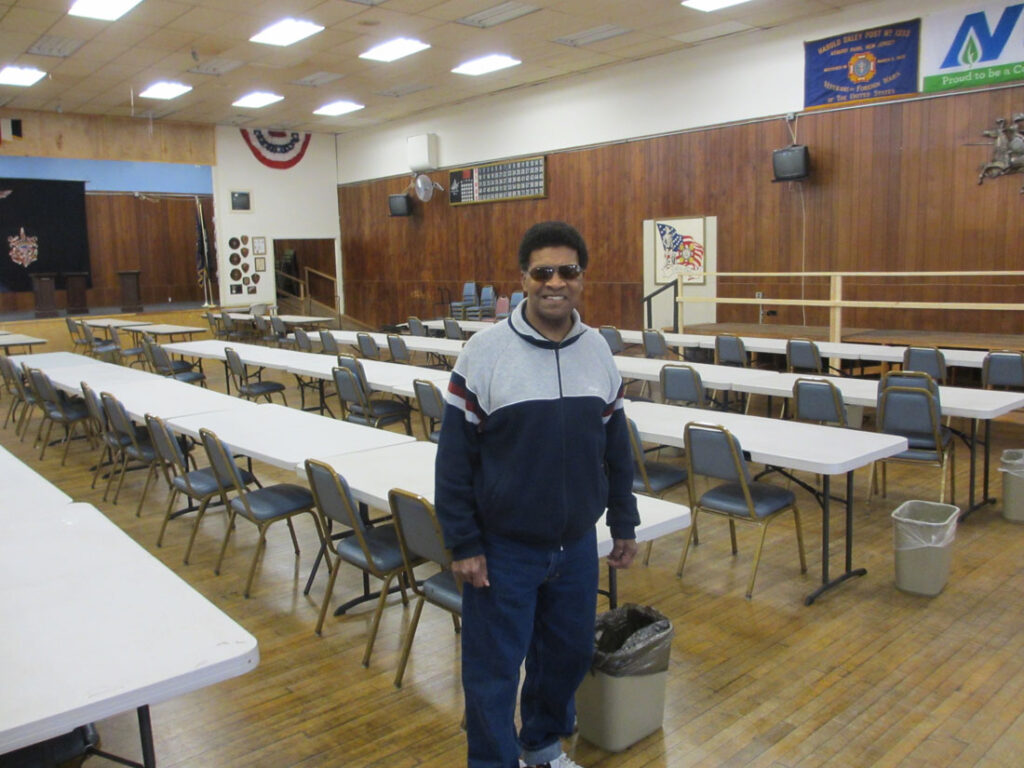
Asbury Park Armory Historic Timeline
- January 1910 – the state military board began looking for a site to build an armory to house Company H of the National Guard. It was to be used for drill practice, storing weapons and munitions and as a firing range. They narrowed it down to two locations. The location of the Britton White farmhouse that Bradley had moved to Asbury and Railroad Avenues or the old Bradley corporation yard at Bond Street & Lake Avenue. The preferred site was the White homestead which would be demolished.
- February 1910 – James A. Bradley then refused to sell the railroad Avenue site unless construction could begin in a year, which was impossible.
- April 1911 – The state appropriates $25,000 to build the Armory.
- May 1911 – The Lake & Bond site is now selected for the Armory.
- April 1914 – the state approves an additional $5,000 for building the Armory.
- May 1914 – Architect drawings are completed for the armory and bids are opened for construction. The design is described as follows:
“The armory is to be a two-story building of brick, trimmed with terra cotta. The dimensions will be 80 feet by 90 feet. The building will cost about $25,000, but with all the fittings, etc. the cost will amount to between $30,000 and $35,000. On the first floor of the building will be a large drill hall, with the roof supported by steel trusses, and a balcony overlooking it, where spectators may view the maneuvers. The front part of the lower floor will be divided into officers’ quarters, while at the back will be an 80 foot rifle range. Besides the balcony on the second floor will be a large lounging room. The basement will be divided into company rooms, lounging rooms, rooms containing shower baths and a cold storage plant.” - May 1914 – the low bid is accepted at $25,310. To get the $25,00 from the state, the City of Asbury had to raise an additional $400. Bradley donated $150 of that. Chamber of Commerce donated $250.
- July 1914 – Work began on construction of the Armory. Workers had to clear the fenced in lot of trash that had been strewn there. Prior to that, kids had used it as a ballfield but when windows started to get broken on the accompanied building they fenced it in.
- March 1915, Company H moved into the Armory.
- April 1915 – The state passes a bill allowing Armories to be used for community events.
- From that point on the armory was used for basketball games, Saturday night dances, rifle clubs used it for range practice, later on wrestling matches, etc.
- The Armory housed troops headed for Europe during World Wars I and II.
- 1954 – Weekly boxing matches broadcast nationally on ABC
- In the 1940’s and 1950’s it also became the large venue of choice for concerts and dances for black youth. Nationally known major black entertainers played there weekly.
Charlie Horner
Information from “Springwood Avenue Harmony: The Unique Musical Heritage of Asbury Park’s West Side, Volume 2, 1946 – 1980.”
(c) Asbury Park Museum, Charlie Horner